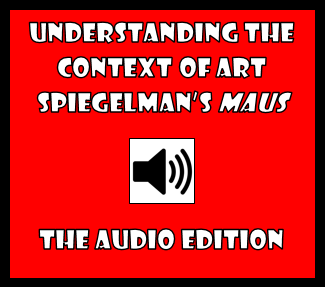|
by Glen Downey, Comics in Education, www.comicsineducation.com One of the most confusing things about comics is the plethora of terms that is used to describe it. I think it’s fair that if we are teaching our students about comics, graphic novels, or visual narratives, we should be clear what we mean by these terms. In English, we’ve traditionally chosen a “funny” word to describe what we’re discussing: comic. The word “comic” has an etymology that goes back to the ancient Greek word for “revel,” and which we use interchangeably either for someone who makes their living telling jokes or for sequential art. Below is a chart that can help us come to terms with some of the basic definitions of the genre. Comic StripA visual story told as sequence of drawings or images, either in color or black and white, relating a comic incident, adventure, mystery, or some other manner of narrative. It isoften published in serial form as a sequence of panels and gutters, having dialogue printed in balloons and narration in boxes. Graphic Novel *A book made up of comics content that usually features a longer narrative than that found in a comic book. The term is often intended to include fiction, non-fiction, and anthologized collections of single issue comics . It is distinguished from the term "comic book", which is used for comics periodicals. Visual NarrativeA story that is told primarily through the use of visual media, including still photography, illustration, or video, and which can be enhanced with graphics, music, voice and other audio. Sequential ArtA term used for art that tells a story or narrative through a sequence or series of images, so a form of art rather than a style. Graphic novels, comics, and cartoons are all sequential art. Bande DesineeA term reserved for Franco-Belgian comics that have their own unique style and history. Literally deriving their name from the idea of “drawn strips,” they do not linguistically contain the idea of something humorous or funny as North American “comics” do. MangaA genre of cartoons and comic books originating in Japan and popularized by Osamu Tezuka and others whose style and form go back to the 19th century and ultimately derive from traditions in Japanese art. * Some writers and illustrators of comics take great umbrage at the use of the term “graphic novel,” suggesting that it’s simply a way of dressing up “comics” and making them seem more pretentious than they need to be. Others prefer the term, believing that it specifically refers to comics collected in a longer format with a more literary sensibility akin to what we often find in manga. The important idea, however, is that these terms often contain, touch upon, or overlap one another. Both bande dessinée (like Tintin, Asterix and Obelix, etc.) and manga have their own distinctive styles, with the latter drawing inspiration for its characters from the exaggerated, wide-eyed characters of early 20th century American comic book characters, like Betty Boop.
0 Comments
Your comment will be posted after it is approved.
Leave a Reply. |
Glen DowneyDr. Glen Downey is an award-winning children's author, educator, and academic from Oakville, Ontario. He works as a children's writer for Rubicon Publishing, a reviewer for PW Comics World, an editor for the Sequart Organization, and serves as the Chair of English and Drama at The York School in Toronto. If you've found this site useful and would like to donate to Comics in Education, we'd really appreciate the support!
Archives
February 2019
|




 RSS Feed
RSS Feed
